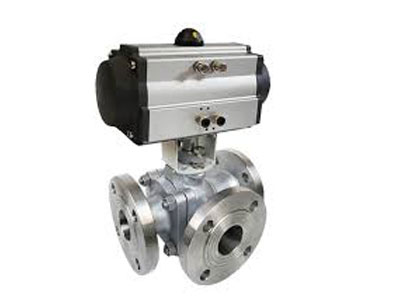What Is The Function Of A Solenoid?
Key Takeaway
A solenoid functions by converting electrical energy into mechanical movement using electromagnetic forces. It consists of a coil of wire, typically wound tightly, through which an electric current passes. This current creates a magnetic field that can move a plunger or armature within the coil, generating mechanical work. The solenoid’s magnetic field is versatile, allowing it to be used as a switch, actuator, or valve in various systems.
In practical applications, solenoids are commonly used in devices like door locks, car starters, and pneumatic tools, where they control the opening and closing of valves or switches. Solenoids can also regulate fluid flow in hydraulic systems and are essential components in electromechanical systems, offering quick, precise movements that can be easily controlled by electrical signals.
Mechanism Behind Solenoid Operations
A solenoid operates through the principle of electromagnetic induction, which is the cornerstone of its functionality. When an electric current passes through the coil of wire in the solenoid, it generates a magnetic field. This magnetic field exerts a pulling force on the movable plunger or armature inside the coil.
The strength of this force depends on factors like the number of coil windings, the current applied, and the type of core material used. Solenoids are designed for precise control, ensuring consistent motion whenever they are activated. This mechanism is what allows solenoids to perform their role effectively in various applications.
The simplicity of the solenoid’s operation combined with its reliability makes it a preferred choice in engineering, from activating relays to controlling valves in complex systems.

Converting Energy - Electrical to Mechanical Motion
One of the primary functions of a solenoid is energy conversion—transforming electrical energy into mechanical motion. This capability is crucial in automation and control systems.
When energized, the coil produces a magnetic field that pulls the plunger into a specific position. This movement can open or close a valve, activate a switch, or perform any other mechanical task. Depending on the design, solenoids can provide either linear or rotational motion, enabling their use in diverse applications.
For instance, in a car’s ignition system, the solenoid engages the starter motor, converting electrical input from the battery into mechanical force that cranks the engine. This efficient energy conversion highlights why solenoids are indispensable in both simple and advanced machines.
Common Roles of Solenoids in Pneumatic Systems
In pneumatic systems, solenoids play a vital role in controlling the flow of compressed air. These systems rely on solenoid valves to regulate air pressure and direction, which is critical for powering tools, actuators, and other equipment.
When the solenoid is activated, its plunger moves to open or close a valve, directing airflow accordingly. This precise control ensures efficient operation of pneumatic tools, such as drills, grinders, and robotic arms. Solenoids also enable rapid switching in these systems, improving response times and operational accuracy.
Their compact size and reliability make solenoids an integral part of pneumatic machinery, enhancing performance in industries like manufacturing, automotive, and construction.
Factors Influencing Solenoid Performance
The performance of a solenoid is influenced by several factors, which engineers must carefully optimize for effective operation.
1. Input Voltage and Current: Adequate electrical input ensures a strong magnetic field for consistent performance. Too low a voltage can weaken the field, while excessive current may overheat the coil.
2. Core Material: Ferromagnetic materials like iron enhance the magnetic field’s strength, improving efficiency.
3. Coil Resistance: High resistance can cause energy loss and overheating. Using insulated, high-quality copper wire minimizes this issue.
4. Environmental Conditions: Temperature and humidity can affect solenoid operation. For instance, high temperatures may weaken the magnetic field, while moisture can corrode components.
5. Mechanical Alignment: Proper alignment of the plunger ensures smooth motion and prevents wear and tear over time.
By addressing these factors, solenoids deliver reliable performance across various industrial and consumer applications.
Real-World Examples of Solenoid Functions in Machines
Solenoids are found in numerous machines across industries, demonstrating their versatility and reliability.
Automotive Systems: Solenoids are used in starter motors, fuel injectors, and door locks. They provide precise control for engine ignition and fluid regulation.
Home Appliances: In washing machines, solenoid valves control water flow during wash and rinse cycles, ensuring efficiency.
Industrial Automation: Solenoids operate in robotic arms and conveyor belts, enabling accurate motion control.
Medical Equipment: In devices like ventilators, solenoids regulate airflow, ensuring patient safety and comfort.
Aerospace Systems: Solenoids control hydraulic valves and actuators, ensuring the precision needed for flight operations.
These examples highlight the solenoid’s adaptability, making it a vital component in both everyday and high-tech applications.
Conclusion
Solenoids simplify engineering processes by offering precise and reliable motion control in a compact design. Their ability to convert electrical energy into mechanical motion enables seamless operation in systems ranging from pneumatic machinery to advanced robotics.
By understanding their mechanism, optimizing performance factors, and leveraging their versatility, solenoids continue to drive innovation in industries worldwide. Their role in simplifying automation and enhancing efficiency solidifies their position as a cornerstone of modern engineering.

